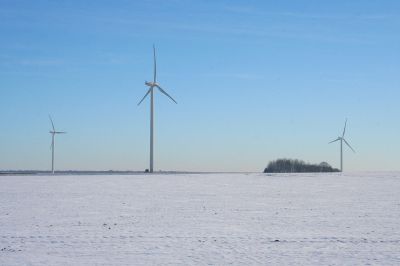Wind energy is considered one of the fastest-growing sources of electricity in the world. Over the past 20 years, a great deal of effort has been devoted to designing wind turbines, control systems and energy storage systems. These efforts were aimed at enabling wind generation in remote or hybrid power applications.
Nowadays, corrosion of wind turbines is not a surprise given the variety of environmental conditions encountered at sea and on land. Icing and corrosive and humid environments can greatly impact on the structure's reliability and lifespan. In the EU-funded project
HYDROBOND, scientists are developing an innovative process for applying superhydrophobic coatings onto large offshore turbine blades that should minimise power losses and mechanical failures.
The anti-icing coatings under development will passively resist ice build-up, thus allowing the design and construction of lighter and larger wind turbines. This eliminates the need for heavier active anti-icing methods. Given that ice accretion changes the aerodynamic properties of the blade airfoil — resulting in power losses — the new coatings should significantly improve cost efficiency.
Enhanced bond strength of the coating blade and the ability retain anti-icing properties even when wear phenomena occur will contribute to minimising maintenance needs. The newly developed process is intended to be portable, which will allow in situ repair.
So far, project members have conducted an overview of the wind market to define specifications for the new long-life blade structures and coatings for on- and offshore platforms.
HYDROBOND's proposed solution can also be easily applied to onshore wind turbines, either to new ones or during retrofit or maintenance cycles of older ones. Except for on- and offshore wind energy, the new hydrophobic coatings can find application in other sectors where ice build-up remains a big issue. These mainly include the aeronautics and maritime sectors.

